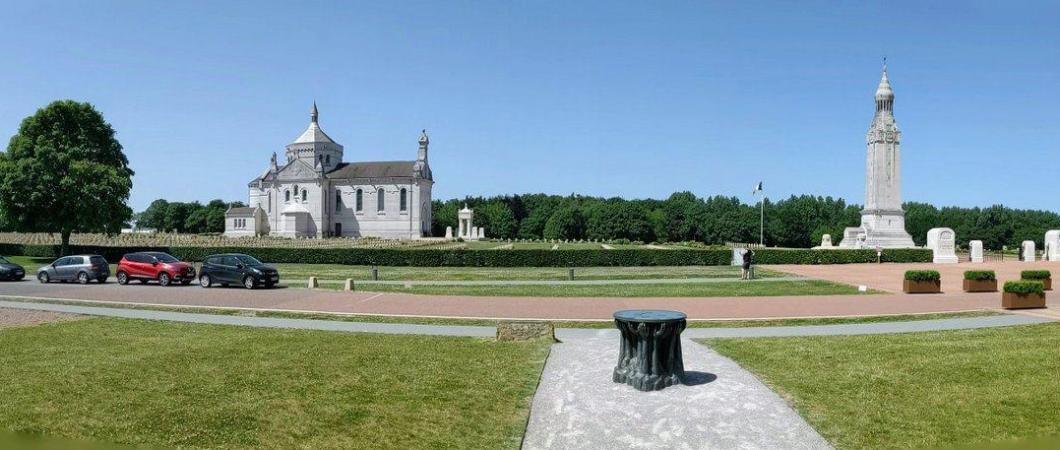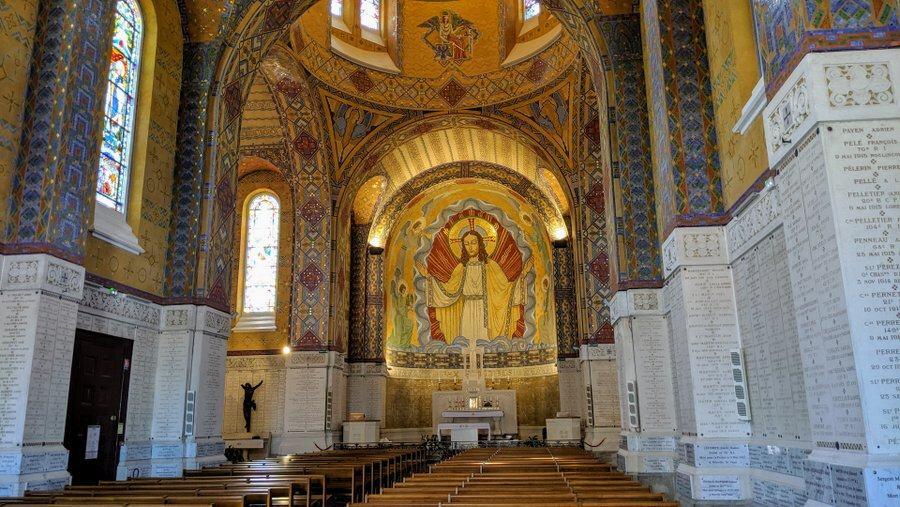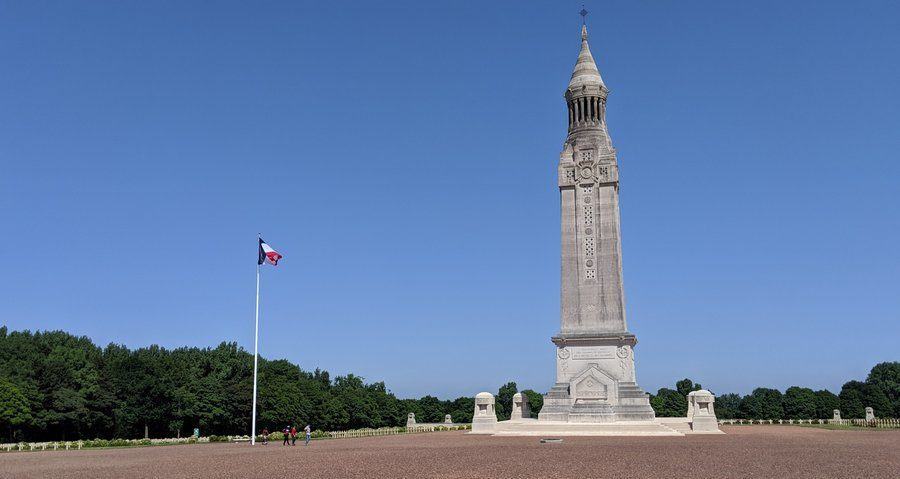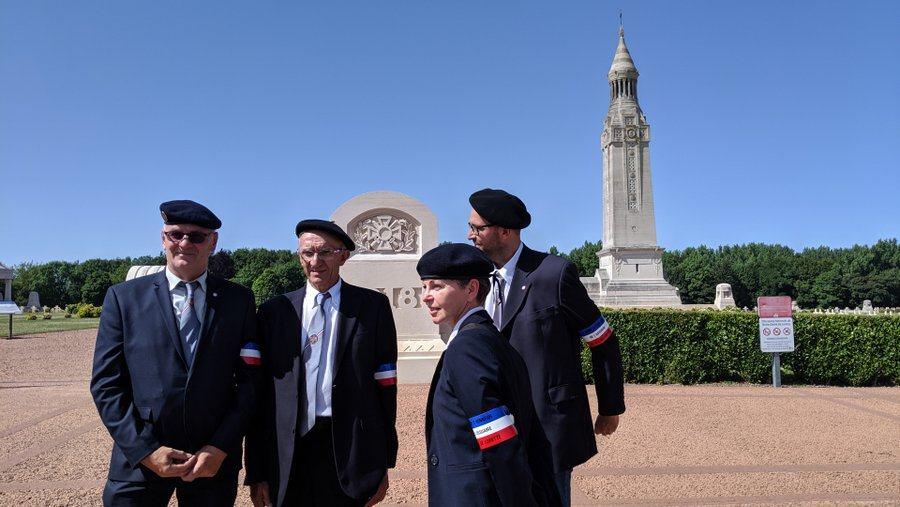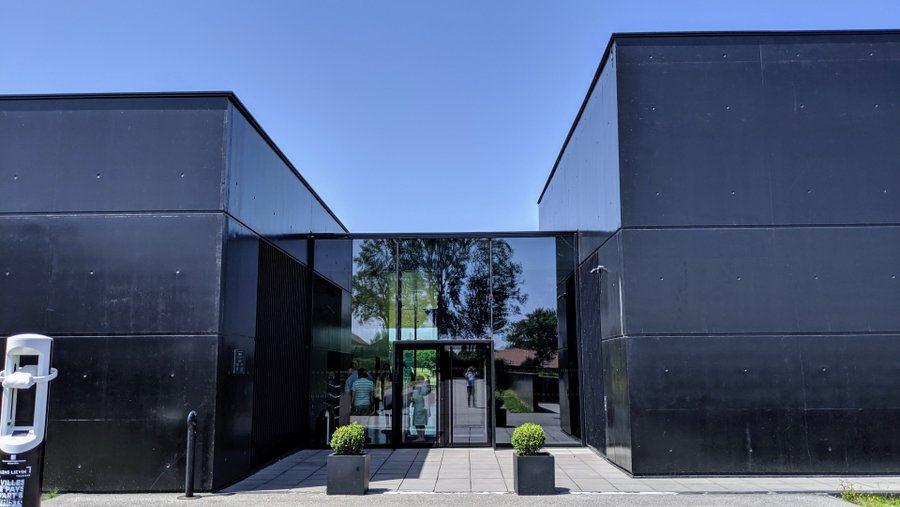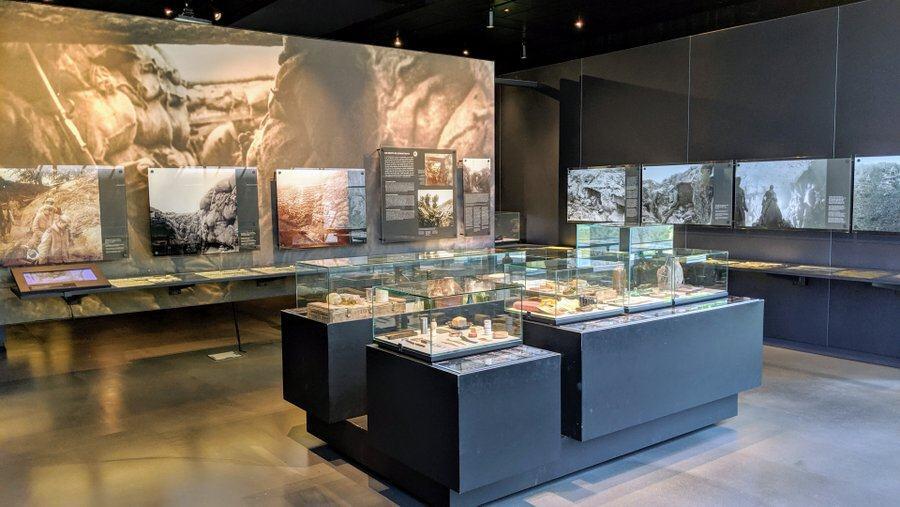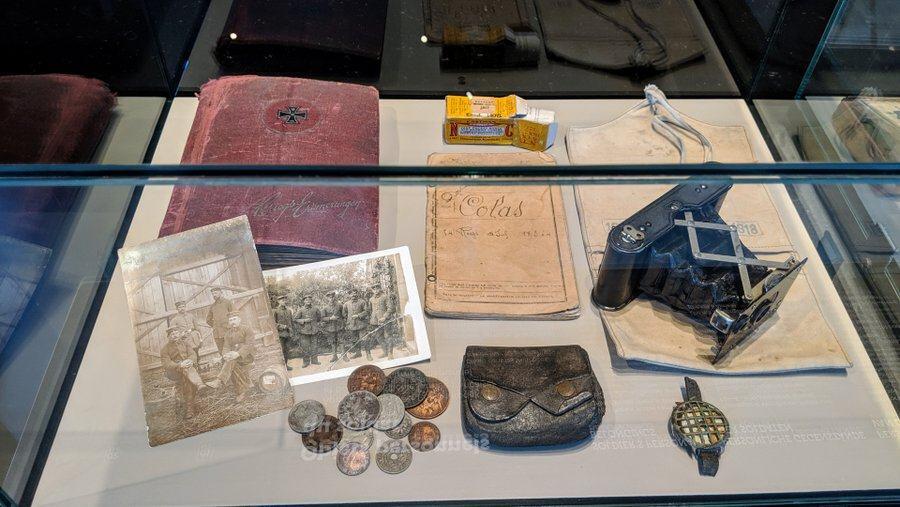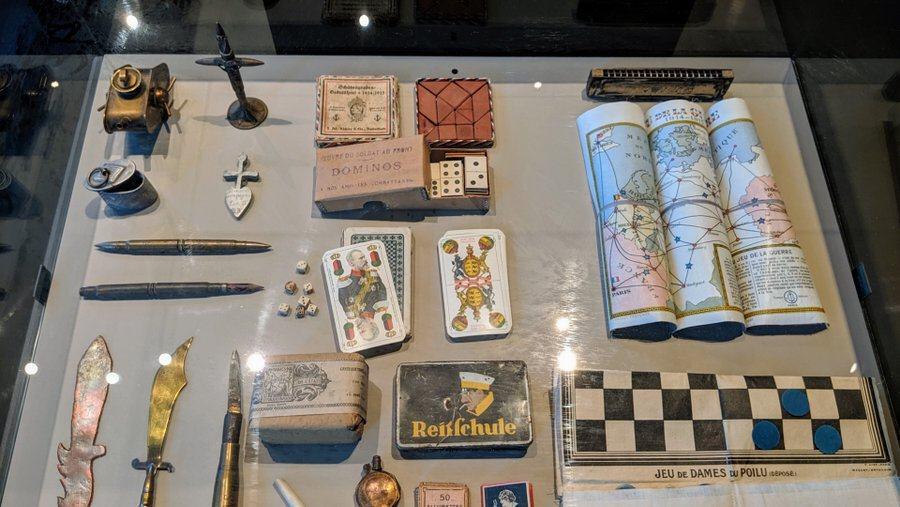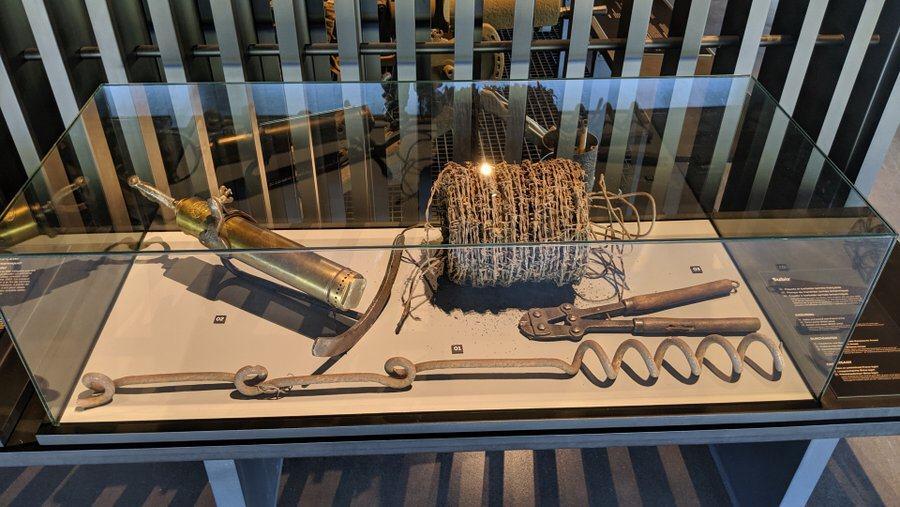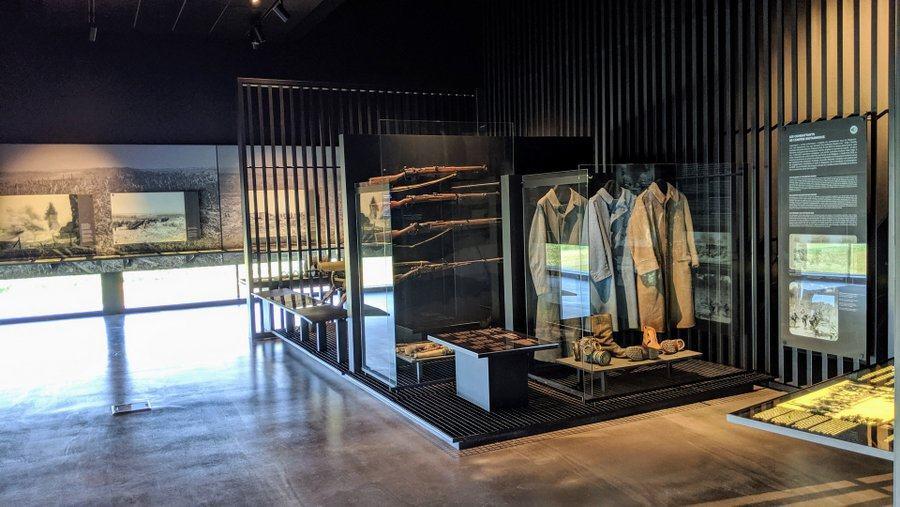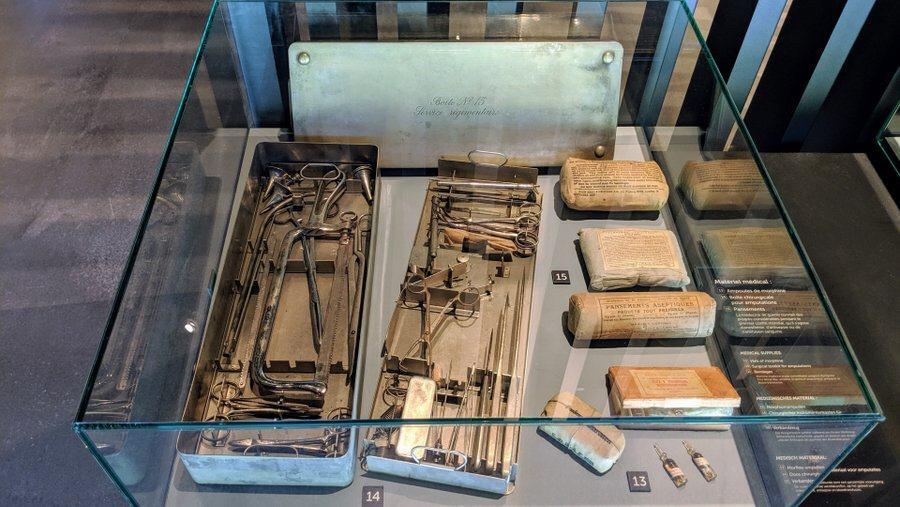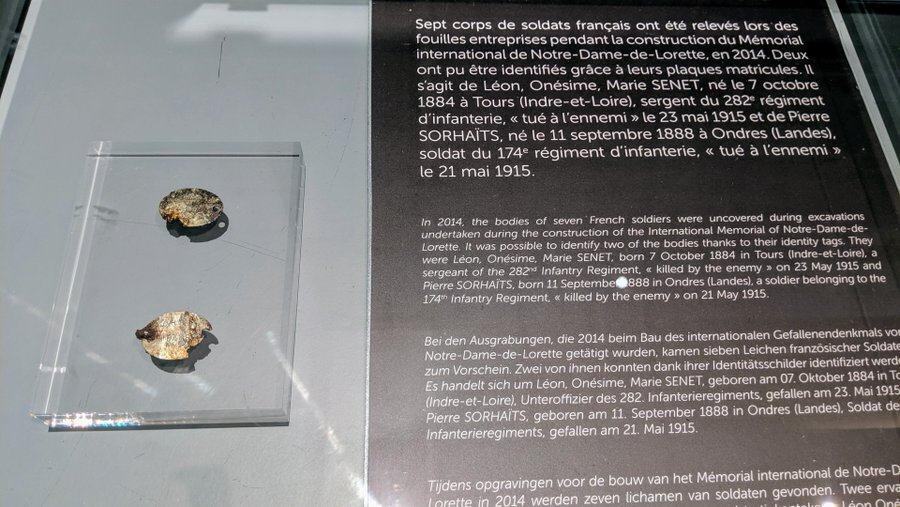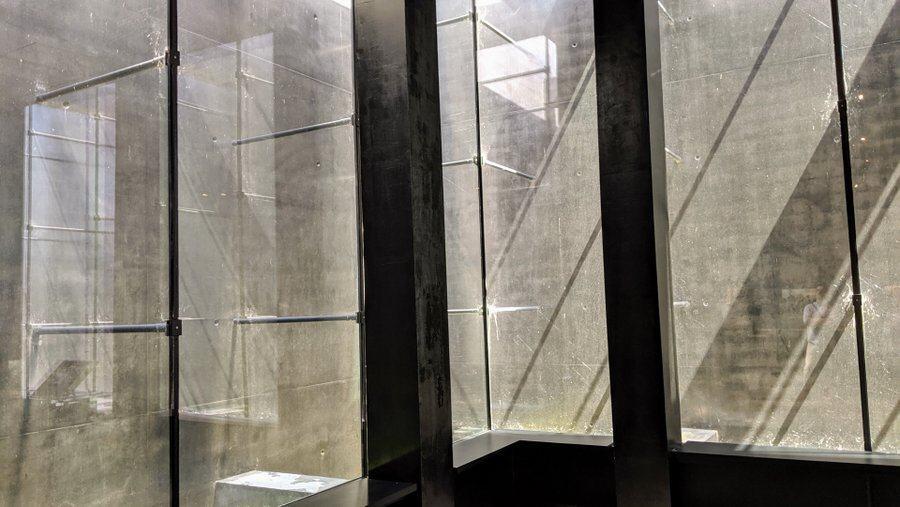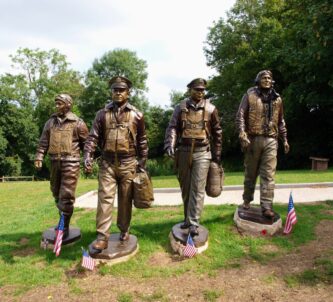Memorial 14-18 is not one, but three sites on, and next to, the dramatic Notre-Dame-de-Lorette hill just southwest of the town of Lens in the Pas-de-Calais region of northern France…
- The National Necropolis of Notre-Dame-de-Lorette is the largest French military cemetery with the remains of over 42,000 French soldiers who fell during the First World War on the front lines in the Artois region and French and Belgian Flanders.
- The Ring of Remembrance – a circular memorial listing the names of almost 580,000 soldiers who fell in northern France between 1914 and 1918.
- The History Centre – a modern museum located at the bottom of the hill in the village of Souchez.
The Lorette hill or plateau (together with the neighbouring Vimy Ridge) was bitterly contested in WW1 and thousands of men died there. It was first occupied by the Sixth German Army in October 1914, who fended off a series of attacks by the French army over the following weeks, while at the same time consolidating their defences. The Germans stayed entrenched on the ridge, fighting off attacks through the winter. Then on 9 May 1915 the French began a major offensive, which resulted in the Germans being pushed off the hill over the next three days of bloody hand to hand fighting. While the French had secured the Lorette plateau, their offensive ran out of steam and they failed to capture Vimy Ridge*. For their effort they lost 104,000 men (killed, missing, wounded or taken prisoner) and the Germans lost 75,000.
There was a further French assault made in Sept that year, aimed at taking the village of Souchez in the gulley between Lorette & Vimy, which blocked the way to Lens. Again it was hard fought and many lives were lost on both sides.
During the war, temporary cemeteries were created by both sides, often near the front line. Shortly after the Lorette plateau was captured in 1915 a small cemetery was established. Then after the war, French soldiers from 150 such cemeteries in the region were re-interred at Notre-Dame-de-Lorette.
The National Necropolis of Notre-Dame-de-Lorette
The National Necropolis is an impressive site, dominated by two monument buildings – the Basilica and the Lantern Tower. Surrounding them are the 20,000 graves of the fallen soldiers who could be identified. Their gravestones are engraved with their name, unit, rank, and date of death. The remains of the 22,000 who could not be identified were interred in eight ossuaries around the site.
The Basilica and the Lantern Tower were designed by architect Louis-Marie Cordonnier. Work began on them in 1920. The Basilica is a large and ornate church building with 19 large stained glass windows, that can be used for services. It takes the role of the former chapel of Notre-Dame-de-Lorette, which sat closer to the southern edge of the plateau (near the Ring of Remembrance), but was destroyed in the war.
The Lantern Tower is a 52 metre high lighthouse (fixed, not rotating) and in its base is the tomb for 32 ‘Unknown Soldiers’. Visitors can go in, but it is guarded and respectfully silent.
The Ring of Remembrance
The Ring of Remembrance is a more recent memorial, inaugurated in 2014. It was an initiative by the Nord-Pas-de-Calais Regional Council to build a monument that reflected the multi-national conflict.
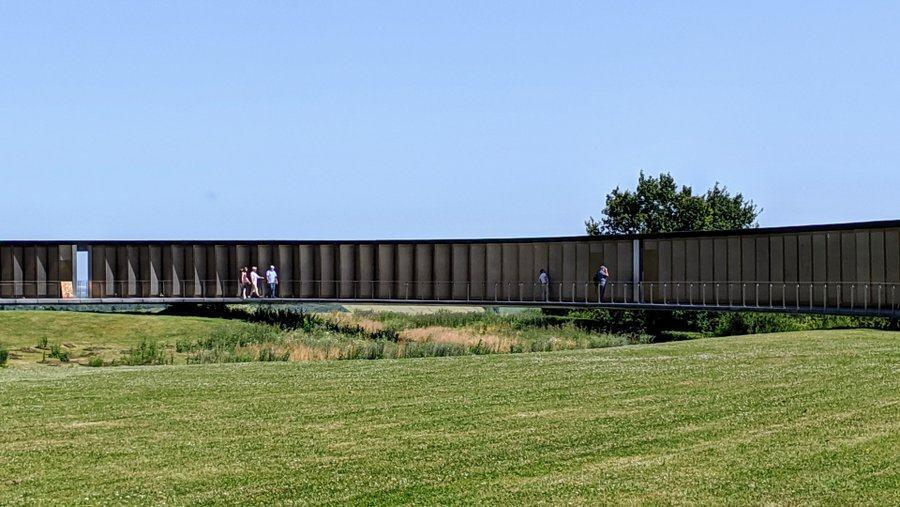
It bears the names of 580,000 soldiers of all nationalities – German, American, British, Canadian, South African, Indian, Australian, etc) – who fell in the region during the First World War. They are arranged alphabetically on 500 bronze sheets on the inside of the giant elliptical ring, designed by Philippe Prost with a circumference of 345 metres of which 56 metres are suspended above the ground.
This site was such a fierce battleground in 1915 it’s hardly surprising that as they started to build the ring, they immediately uncovered two more French infantrymen: Pierre Sorhaïts & Léon Senet, identified from their tags. They now have their own plaque below the Ring where they were discovered, and their names tags are on display in the…
Memorial 14-18 History Centre
Originally called the Lens 14-18 Great War Museum, the History Centre is an interesting modern museum charting – in exhibits, images, and high-tech displays – the course of the First World War in the region.
The building itself is something of an artwork. Designed by Pierre-Louis Faloci, the dark grey slab sides of the building are both dramatic and innovative. From the outside it looks like a near-black, windowless mausoleum, but many of the slabs are offset allowing just the right amount of natural light to come into the building through floor-to-ceiling windows behind.
The museum displays have over 300 large-scale photographs from the 14-18 war, many rare. Some are official images and others are private photos taken by soldiers. The exhibits too are really interesting, and, when it comes to some personal items like games, books and toiletries, many are amazingly well preserved.
The History Centre also keeps the files of the 580,000 soldiers whose names are engraved on the Ring of Remembrance.
Other Pas-de-Calais Posts
Declaration: I was on a press trip with Tourisme Pas-de-Calais.
Factbox
Website:
Memorial 14-18
Getting there:
All three sites are roughly a 15 minute drive from Lens.
The Necropolis and the Ring of Remembrance are on the D58E3, Chemin du mont de Lorette.
The History Centre is in the village of Souchez. It’s car park is accessible from the Chemin de Lens.
Entry Price:
These are memorials. All free to enter.
That said, there are small charges for audio guides and guided tours.
Opening Hours:
| Necropolis | Daily, 9.00 – 19.00 |
| Ring of Remembrance | Daily, illuminated to 23.00 |
| History Centre | Tuesday to Sunday from 10.00 – 13.00 and 14.00 – 18.00 (17.00 from Oct – Mar) |

